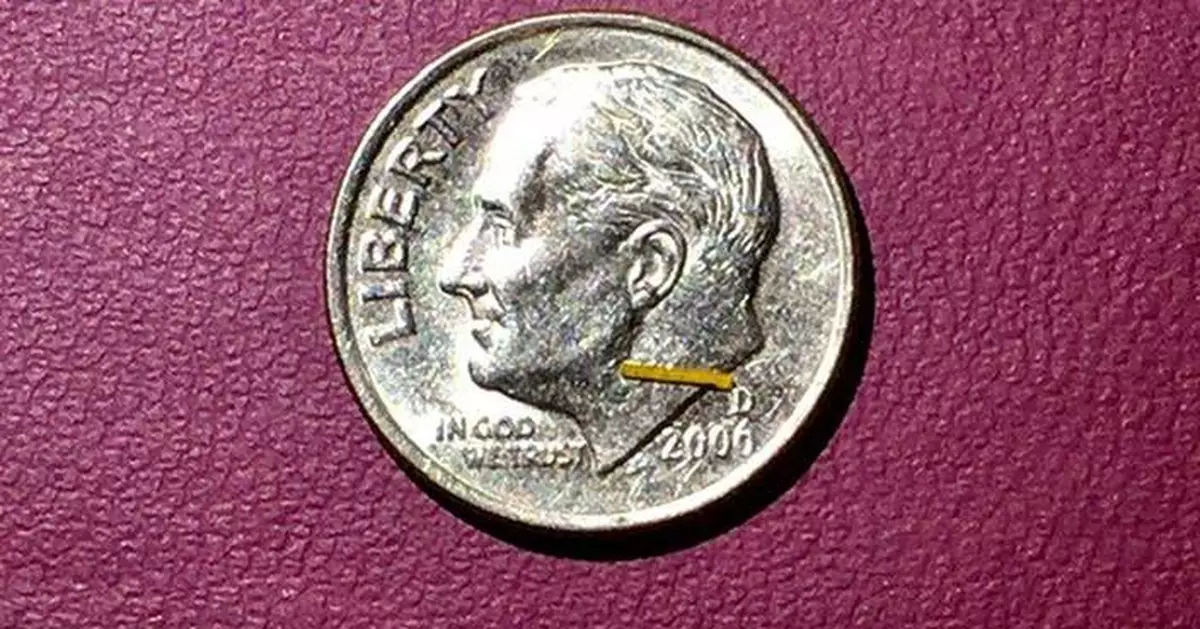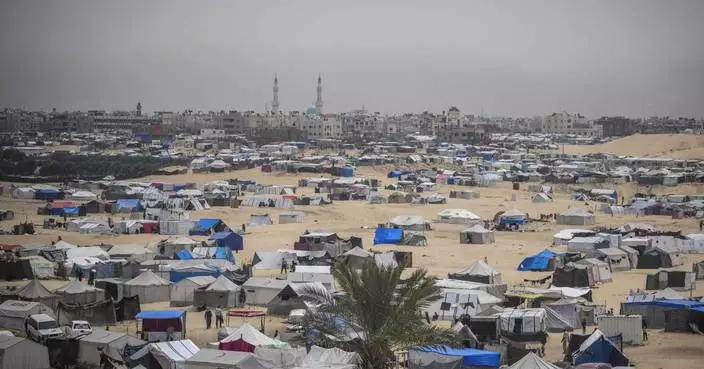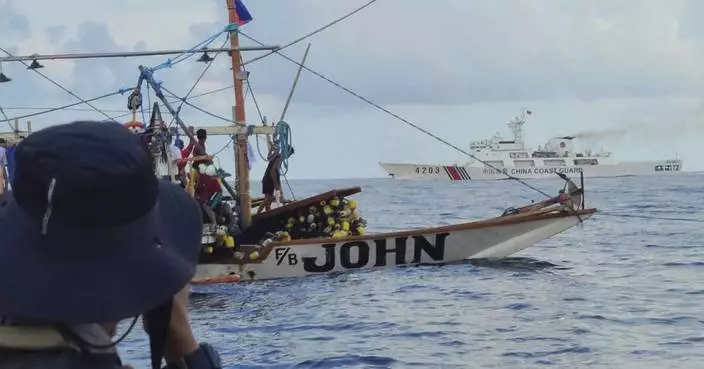NEWTON, Mass.--(BUSINESS WIRE)--Apr 29, 2024--
Inflammasome Therapeutics ( https://www.inflam.com ), a private company developing a new class of inflammasome inhibitor drugs, Kamuvudines, as therapies for prevalent, degenerative diseases, announced the first patient has been dosed in a first-in-class clinical trial for dry AMD. The Phase 1 trial (ClinicalTrials.gov ID NCT06164587) is sponsored by the University of Kentucky and expected to enroll up to five patients with GA due to age-related macular degeneration (AMD).
This press release features multimedia. View the full release here: https://www.businesswire.com/news/home/20240429438564/en/
Trial participants will receive a tiny, sustained release implant ( illustration is available) that will provide slow, consistent release of the drug K8 directly into the back of the eye. K8 was specifically designed for retinal delivery and the implants and injector system were crafted to deliver this particular drug. This combined drug and delivery strategy allows high therapeutic doses to be maintained in the eye while the drug is undetectable in systemic circulation.
“This marks the second trial underway with our Kamuvudines in ophthalmology,” said Dr. Paul Ashton, President and CEO of Inflammasome Therapeutics, developers of both the compounds and delivery systems for administration.
GA affects approximately one million individuals in the US and more than eight million worldwide. In GA, multiple toxic substances (such as complement, amyloid beta, retrotransposons, iron, and reactive oxygen species) build up in the eye and trigger inflammasome activation that then causes cells in the macula to slowly die (atrophy). This is a very similar process to what goes on in the brain and nervous system in patients with ALS, Alzheimer’s disease and multiple sclerosis.
Last year, two drugs (Syfovre and Izervay) were approved for GA that target one of these toxic substances, complement. The drugs do not target other toxic elements and only modestly slow progression of the disease. Unfortunately, they also increase the risk of developing wet AMD. Furthermore, the drugs require an intraocular injection every four to eight weeks.
There is tremendous interest in developing potential GA treatments. There are 38 other interventional clinical trials for GA registered in clinicaltrials.gov., almost all of which target individual toxic substances, but not the underlying cause of the atrophy, inflammasome activation.
“That’s where we believe we provide a distinctive and significant difference,” said Dr. Ashton. “Our Kamuvudines have been shown in pre-clinical studies to block inflammasome activation caused by multiple toxic pathways – complement, amyloid beta, iron overload, retrotransposons, etc. If we can block inflammasome activation in the clinic, we believe we can have a profound effect on the disease by blocking multiple pathways.”
Dr. Ashton confirmed that the implications for treatments in other neuroinflammatory diseases like Alzheimer’s Disease, ALS and Multiple Sclerosis are “extremely interesting. We have Kamuvudines specifically designed for neurological diseases that penetrate into the brain and Central Nervous System from a simple oral tablet. Inflammasome Therapeutics is expected to begin clinical trials in some of these diseases soon as well,” he affirmed.
Inflammasome Therapeutics’ co-founder, Dr. Jayakrishna Ambati, has spent more than a decade developing Kamuvudines and identifying their role in the inhibition of inflammasome activity that is being found to be the underlying cause of many diseases. In a series of publications in journals such as Science and Nature, he has described the basic research on GA and pre-clinical development of Kamuvudines:
https://www.science.org/doi/10.1126/science.1261754
https://www.nature.com/articles/nature09830
https://www.science.org/doi/10.1126/sciadv.abj3658
https://www.science.org/doi/10.1126/sciimmunol.abi4493
Dr. Ambati and Dr. Ashton co-founded Inflammasome Therapeutics in 2016 to develop therapies for prevalent, degenerative diseases and to develop novel delivery technologies for the sustained release of therapeutic agents and compounds. The company combines scientific excellence with proven development expertise and works to develop products via a mixture of licensing agreements and internal development, including work with Boehringer Ingelheim and the Gates Foundation.
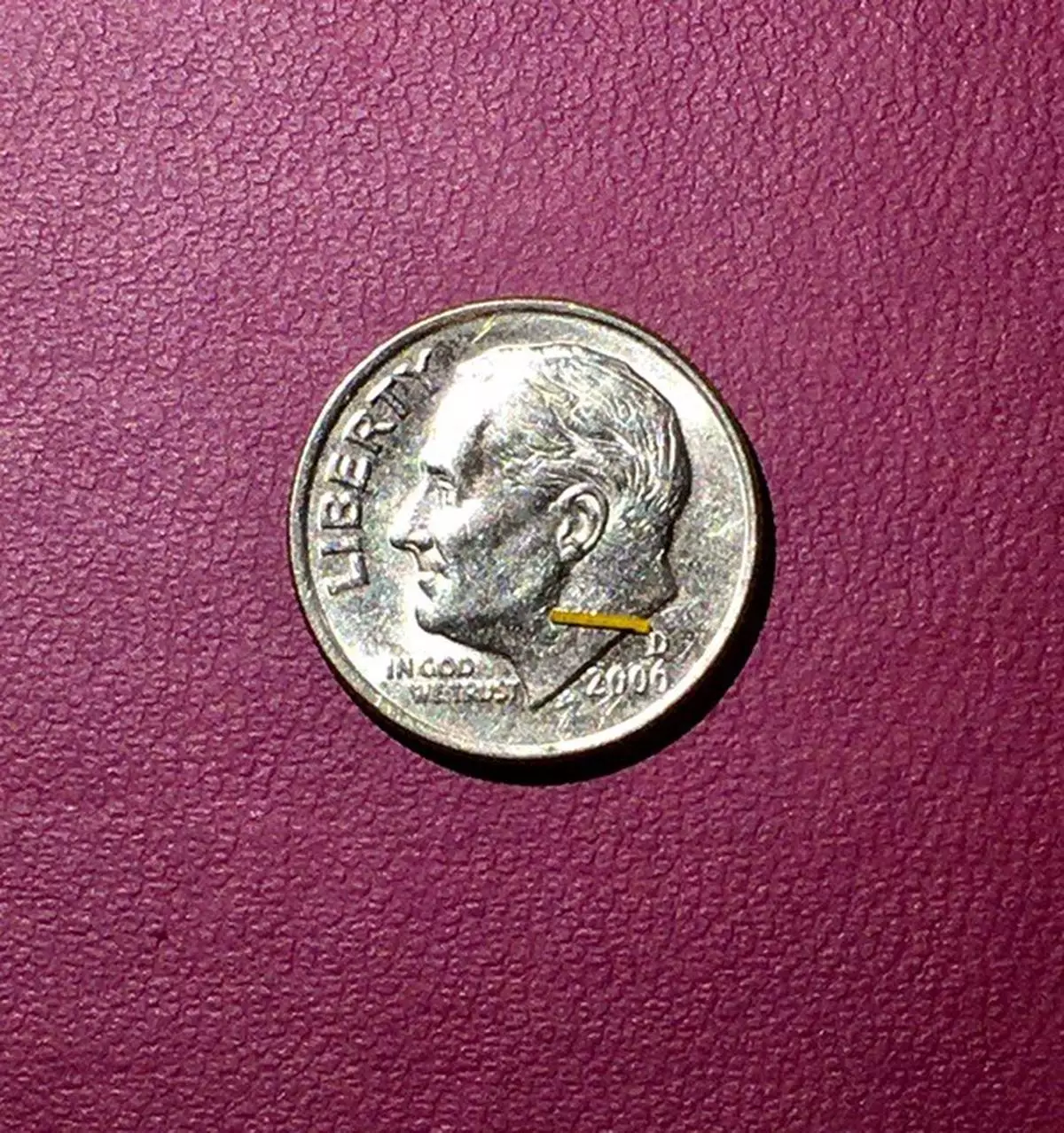

Inflammasome's K8, a tiny sustained release implant that provides slow, consistent release of the drug K8 (inflammasome inhibitor drug Kamuvudine) directly in the back of the eye for a period of three months. (Photo: Business Wire)
WASHINGTON (AP) — The U.S. military finished installing a floating pier for the Gaza Strip on Thursday, with officials poised to begin ferrying badly needed humanitarian aid into the enclave besieged over seven months of intense fighting in the Israel-Hamas war.
The final, overnight construction sets up a complicated delivery process more than two months after U.S. President Joe Biden ordered it to help Palestinians facing starvation as food and other supplies fail to make it in as Israel recently seized the key Rafah border crossing in its push on that southern city on the Egyptian border.
Fraught with logistical, weather and security challenges, the maritime route is designed to bolster the amount of aid getting into the Gaza Strip, but it is not considered a substitute for far cheaper land-based deliveries that aid agencies say are much more sustainable. The boatloads of aid will be deposited at a port facility built by the Israelis just southwest of Gaza City and then distributed by aid groups.
U.S. troops will not set foot in Gaza, American officials insist, though they acknowledge the danger of operating near the war zone.
Heavy fighting between Israeli troops and Palestinian militants on the outskirts of Rafah has displaced some 600,000 people, a quarter of Gaza’s population, U.N. officials say. Another 100,000 civilians have fled parts of northern Gaza now that the Israeli military has restarted combat operations there.
Pentagon officials said the fighting in Gaza wasn’t threatening the new shoreline aid distribution area, but they have made it clear that security conditions will be monitored closely and could prompt a shutdown of the maritime route, even just temporarily. Already, the site has been targeted by mortar fire during its construction and Hamas has threatened to target any foreign forces who “occupy” the Gaza Strip.
The “protection of U.S. forces participating is a top priority. And as such, in the last several weeks, the United States and Israel have developed an integrated security plan to protect all the personnel who are working," said Navy Vice Adm. Brad Cooper, a deputy commander at the U.S. military's Central Command. "We are confident in the ability of this security arrangement to protect those involved.”
U.S. troops anchored the pier at 7:40 a.m. local time Thursday, the military's Central Command said in a statement, which stressed that none of its forces entered the Gaza Strip.
“Trucks carrying humanitarian assistance are expected to begin moving ashore in the coming days,” the statement said. “The United Nations will receive the aid and coordinate its distribution into Gaza.”
It wasn't immediately clear which U.N. agency would be involved.
Israeli forces will be in charge of security on the shore, but there are also two U.S. Navy warships near the area in the eastern Mediterranean Sea, the USS Arleigh Burke and the USS Paul Ignatius. Both ships are destroyers equipped with a wide range of weapons and capabilities to protect American troops off shore and allies on the beach.
Aid agencies say they are running out of food in southern Gaza and fuel is dwindling, which will force hospitals to shut down critical operations and halt truck deliveries of aid. The United Nations and other agencies have warned for weeks that an Israel assault on Rafah, which is on the border with Egypt near the main aid entry points, would cripple humanitarian operations and cause a disastrous surge in civilian casualties.
More than 1.4 million Palestinians — half of Gaza’s population — have been sheltering in Rafah, most after fleeing Israel’s offensives elsewhere.
The first cargo ship loaded with 475 pallets of food left Cyprus last week to rendezvous with a U.S. military ship, the Roy P. Benavidez, which is off the coast of Gaza. The pallets of aid on the MV Sagamore were moved onto the Benavidez. The Pentagon said moving the aid between ships was an effort to be ready so it could flow quickly once the pier and the causeway were installed.
The installation of the pier several miles (kilometers) off the coast and of the causeway, which is now anchored to the beach, was delayed for nearly two weeks because of bad weather and high seas. The sea conditions made it too dangerous for U.S. and Israeli troops to secure the causeway to the shore and do other final assembly work, U.S. officials said.
According to a defense official, the Sagamore’s initial shipment was estimated to provide enough to feed 11,000 people for one month. The official spoke on the condition of anonymity to provide details not yet made public.
Military leaders have said the deliveries of aid will begin slowly to ensure the system works. They will start with about 90 truckloads of aid a day through the sea route, and that number will quickly grow to about 150 a day. But aid agencies say that isn't enough to avert impending famine in Gaza and must be just one part of a broader Israeli effort to open land corridors.
Biden used his State of the Union address on March 7 to order the military to set up a temporary pier off the coast of Gaza, establishing a sea route to deliver food and other aid. Food shipments have been backed up at land crossings amid Israeli restrictions and intensifying fighting.
Under the new sea route, humanitarian aid is dropped off in Cyprus where it will undergo inspection and security checks at Larnaca port. It is then loaded onto ships — mainly commercial vessels — and taken about 200 miles (320 kilometers) to the large floating pier built by the U.S. military off the Gaza coast.
There, the pallets are transferred onto trucks, driven onto smaller Army boats and then shuttled several miles (kilometers) to the floating causeway, which has been anchored onto the beach by the Israeli military. The trucks, which are being driven by personnel from another country, will go down the causeway into a secure area on land where they will drop off the aid and immediately turn around and return to the boats.
Aid groups will collect the supplies for distribution on shore, with the U.N. working with the U.S. Agency for International Development to set up the logistics hub on the beach.
Sabrina Singh, Pentagon spokeswoman, told reporters that the project will cost at least $320 million, including the transportation of the equipment and pier sections from the United States to the coast of Gaza, as well as the construction and aid delivery operations.
Associated Press writer Jon Gambrell in Dubai, United Arab Emirates, contributed to this report.
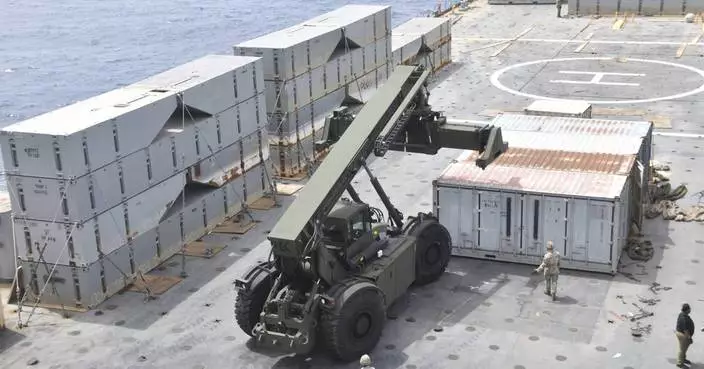
US military says Gaza Strip pier project is completed, aid to soon flow as Israel-Hamas war rages on
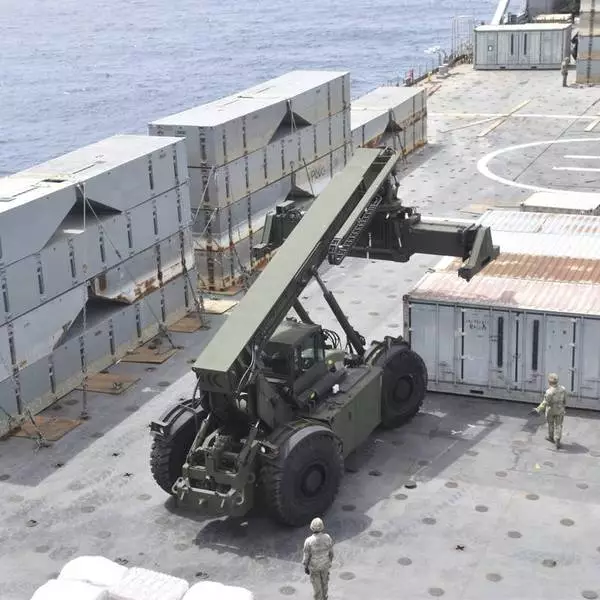
US military says Gaza Strip pier project is completed, aid to soon flow as Israel-Hamas war rages on

In this image provided by the U.S. Army, soldiers assigned to the 7th Transportation Brigade (Expeditionary) and sailors attached to the MV Roy P. Benavidez assemble the Roll-On, Roll-Off Distribution Facility (RRDF), or floating pier, off the shore of Gaza on April 26, 2024. The U.S. expects to have on-the-ground arrangements in Gaza ready for humanitarian workers to start delivering aid this month via a new U.S.-backed sea route for Gaza aid. An official with the U.S. Agency for International Development tells the AP that humanitarian groups expect to have their part of preparations complete by early to mid-month. (U.S. Army via AP)




